Refrigerators "Minsk": a review of the lineup + analysis of frequent breakdowns
Household appliances made in Belarus were notable for their enviable quality and durability, for which they were highly valued in the territory of the USSR first and then the so-called post-Soviet space.
You can still find the Minsk refrigerator in some houses or summer cottages, despite the fact that the last of them was released more than a dozen years ago. What is such a good technique and how to repair it? We'll figure out.
The content of the article:
Features of brand refrigerators
The history of the appearance of Minsk refrigeration units began in 1959, when, by order of the government, the Gas Equipment Plant in the capital of Belarus was supposed to begin production of domestic cooling equipment.
The first device with the name Minsk was released in 1962. Later, namely in 1977, the Atlant association was organized, in addition to the Minsk plant, the machine-tool plant in Baranovichi also entered here.
This was important since it was manufactured here. compressors for refrigeration units. Atlas paid great attention to technical developments and their introduction into new models.
Therefore, it is no coincidence that it was here that the first Soviet two-chamber refrigerator appeared. Of course, the Minsk brand. For his time, he became a real breakthrough and enjoyed an unprecedented demand.
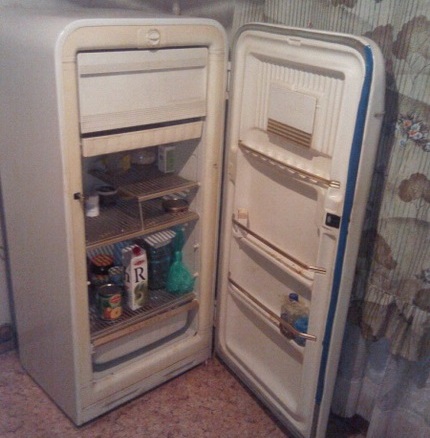
Later, the union begins to release refrigeration units Atlant. Gradually, the names Minsk and Atlant merged; for some time, products under the double name were produced.
Today, in stores, you can often find the Atlant brand, sometimes a “second name” can be attributed in the “old fashioned way”.Officially, Belarusian products are now called Atlant, but in fact it’s the same good old Minsk.
General characteristics of the manufacturer's models
The model range of refrigeration units under the Minsk brand is quite wide. All devices are characterized by high efficiency of cold production and economical energy consumption.
They are extremely easy to handle and varied in color. Most of the equipment is small in size, which allows you to place it even in a very small kitchen.
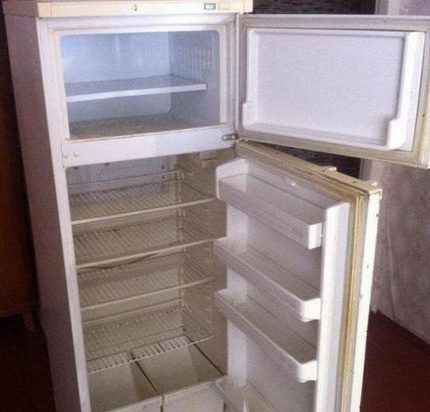
Of the technological features, it is worth noting simple design solutions. Devices are equipped with one, rarely two compressors.
The latter option was used for dual-chamber systems. An environmentally friendly, but today obsolete refrigerant was pumped into them to work.
None of the Minsk devices had the Anti-Frost system installed, which greatly simplifies their repair.
The Minsk plant mounted a drip or, as it is also called, a “crying” defrosting system on its units. It involves the presence of drainage that removes accumulated moisture from the refrigerator compartment.
No defrosting system was used for the freezer compartment. It thawed by hand as ice build-ups accumulated. Electronics in equipment control systems has also never been used.
User feedback on brand technology
The owners respond positively about the refrigeration units of the Belarusian manufacturer. Thanks to the simple design, there is practically nothing to break in the unit, and if a breakdown occurs, then you can try to fix it on your own.
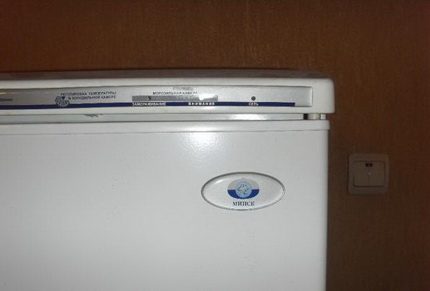
Due to its structural simplicity and high quality of components and assembly as a whole, Minsk devices are reliable and last a very long time. This fact is appreciated by numerous users of technology.
There are frequent cases when a refrigerator working properly was disposed of only because it was outdated morally. However, then the owners sometimes regretted, because it is far from always possible to get the same reliability and durability from new devices.
Typical malfunctions of various models
Over time, the operation of refrigeration units may cause malfunctions.
Practice shows that most often such problems appear:
- The freezer compartment is operating normally, and the refrigerator is holding an abnormally high temperature.
- The back wall freezes in the refrigerator compartment, after removing the ice, it appears again.
- The refrigerator compartment works fine, but the freezer compartment does not freeze.
- The compressor either does not start or works without shutting down.
- The appearance of water inside the working compartments, the growth of a snow coat on the evaporator.
- The compressor starts, but after some time, it turns off randomly.
- The unit does not show any signs of life.
The causes of these problems may be different. It will be easiest to determine them if you know the "sore" places of your model.
Masters working with Minsk devices distinguish characteristic breakdowns for a group of specific models. We offer to consider them in more detail.
Group # 1 - Minsk MXM 130, 131, 151, 152, 161, 162
For these models, a typical problem is the freezing of the back of the refrigerator. Most often, ice appears in the area of the evaporator on the left side of the plate.
Here, an ice block constantly freezes, which melts when the device is defrosted, but then freezes again. Thus, the owner has to defrost the unit more and more often. The problem with time only worsens.
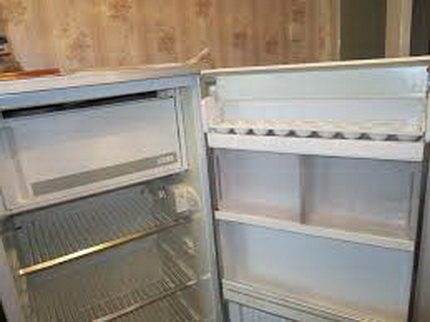
The rate of ice formation and its amount is gradually increasing. If you do not take measures, the ice begins to “grab” the shelves, taking the usable volume of the device.
In an attempt to get rid of the ice, some housewives chop it with a knife, which can lead to a breakdown of the evaporator. This is a more complex problem, which requires sealing the damaged part, replacing the filter and filling the system with refrigerant.
Group # 2 - Minsk MXM 260, 268, 2706, 2712
These are two-chamber devices with the top position of the freezer. Their “pain” point is clogging of the capillary system.
This is because R134A, a refrigerant circulating in their circuits, is prone to clogging.
Mixing with a small amount of engine oil, it forms small “blood clots” that shut down the system. This is manifested as follows.
The freezer compartment continues to function normally, sometimes it begins to freeze more than necessary. In the refrigerator compartment, the temperature is steadily increasing.
An increase in temperature can be sharp, but sometimes a snowy coat appears first. It melts quickly as the temperature becomes unacceptably high.
To solve the problem, blowing the tube is used, as a result of which the blood clot enters the evaporator.
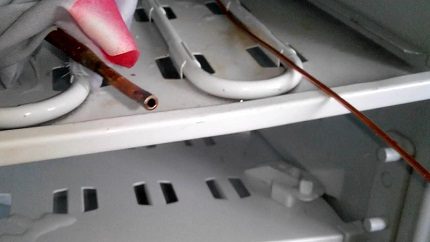
Group # 3 - malfunctions Minsk 15m
In this model, it often fails temperature controllerthat requires replacement. Possible compressor failure. In addition, quite often there is a leak of refrigerant from the evaporator of the freezer.
In the latter case, the evaporator is covered with a coat of frost, and the temperature in the refrigerator compartment rises.
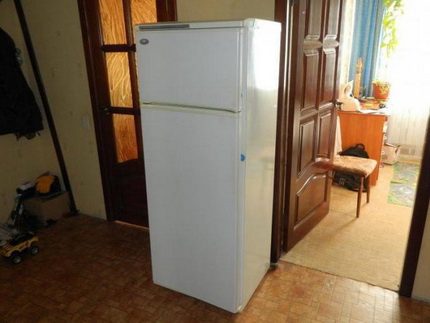
Unfortunately, it is far from always possible to detect a leak and the evaporator has to be changed. In the best case, the spoiled part is sealed qualitatively.
Group # 4 - Minsk MXM 126, MXM 1607, 1609
Achilles Heel Model Number 126 - Thermostat. If the unit operates cyclically, that is, it is periodically turned off / on, but at the same time the temperature in the refrigerator compartment is unacceptably high, and the freezer compartment functions normally.
Most likely, the thermostat has failed, which will have to be replaced with a new one.
Models with the nomenclature designation 1607 and 1609 have two main problems. The first is a blockage in the capillary tube, the second is a refrigerant leak that occurred in the foamy part of the equipment.
In both cases, the refrigerator compartment stops working, and the freezer continues to function for some time. But he gradually stops working.
The main difference is that in the event of a leak, the compressor continues to work, and there is no cold in both compartments.
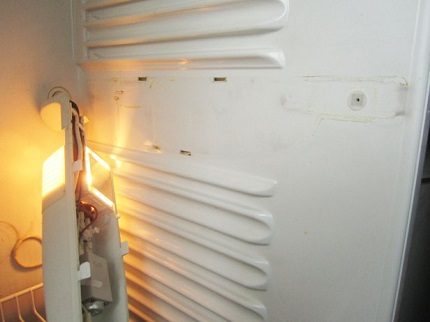
Independent repair of units Minsk
Deciding on an independent repair work, you need to understand that the refrigerator is a complex unit. Diagnostics and troubleshooting will require specialized knowledge and experience.
It is highly desirable that they be. Otherwise, unskilled repairs can only aggravate the situation, even to the point of having to purchase new equipment.
If you have the skills and experience, you can try to cope with the problem on your own.Let's talk about how to repair typical problems of Minsk brand devices.
Problem # 1 - capillary tube blockage
This is a time-consuming operation that requires accuracy, so it is advisable to diagnose your refrigerator as accurately as possible.
So, we start the unit and take the discharge pipe in the hand. We look if it first actively warms up, but literally in three to four minutes it starts to cool, most likely, there is a blockage.
A similar diagnosis can be made if the condenser is only half heated.
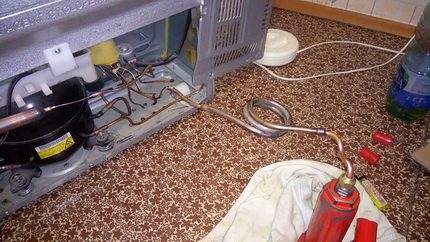
Now, gently wipe the condenser with a damp rag, cleaning it from dirt and dust that prevent the device from fully cooling the gas mixture.
If after this part of the condenser remains cold and does not even heat up a little, this means that the thrombus in the capillary prevents the cooled gas from moving on. After cleaning the condenser, the refrigerator may stop generating cold.
This is because the pressure in the cleaned element will decrease, therefore, the mixture will pass worse through the blockage in the tube. The most accurate diagnosis can be made only after opening the system.
Masters warn that doing this is only for those who have certain knowledge and have acquired the necessary tool. So, you need to open the filling pipe, and then connect the pressure gauge to it.
Now you need to start the compressor. Pressure at this stage should not go "minus". Turn off the engine. If the pressure remains the same or rises, but very slowly, then the capillary is clogged.
Cut the capillary on the filter, look. If refrigerant starts to spray from the filter under pressure, the tube is clogged.
You can begin to clean the system. An extremely important point. Masters remind that for the procedure you need to use only "native" oil.
No solvents, washers or other chemicals should be. Only the type of oil that is already used in the system. We remind you that this can be either synthetics or mineral water.
It is strictly forbidden to mix them, as a result of the formation of flakes, which even more clog the capillary. Having prepared everything you need, we get to work. To start, completely defrost the refrigerator.
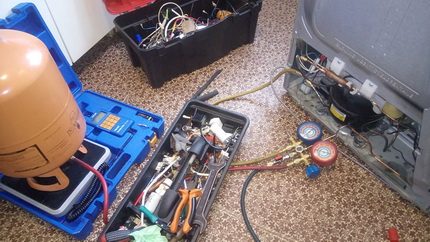
Solder the nozzle from the hydraulic press to the capillary. Fill the press with oil prepared in advance.
Specialists recommend having a separate press for each train. It is expensive, but guarantees no problems after cleaning.
Gently push the oil with a press. We do this until we feel that the handle of the press moves easily and without effort. Usually, 5-6 pumpings are enough to clean.
Now it is advisable to purge the tube with nitrogen. If this is not possible, the craftsmen advise soldering the compressor of the refrigerator to the filter and starting it by purging.
Next, change the filter and solder the system. After which it is evacuated and filled with refrigerant. It is very important to strictly observe the technical conditions and fill in a strictly defined norm of the gas mixture. Repair is over.
Problem # 2 - rear panel freezing
The problem appears as a result of violation of the thermal insulation of the refrigerator compartment. For various reasons, condensate builds up around the evaporator, gradually destroying the thermal insulation.
Actually, the repair consists in its restoration. It is carried out as follows. To begin with, the unit is disconnected from the network and completely defrosted. Then the doors are sealed with tape.
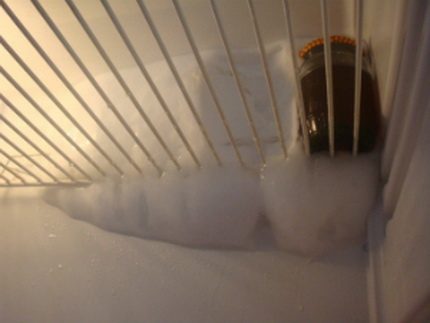
Then the equipment is placed on the stand with the door down. Now you need to carefully unscrew the three screws holding the capacitor. The last fourth screw loosens, but cannot be removed.
Thus, the part can be diagonally shifted, gaining access to the zone with broken insulation. We conduct a study of insulating material. To do this, click on it with your finger.
If the result is a cavity from which moisture oozes, then the material is destroyed. It must be very carefully removed. To do this, take a wooden spatula and take out the damaged insulation with it.
It may seem that to perform this operation with a knife will be easier. But this can damage the tubes and the evaporator, and this is completely unnecessary. Carefully scrape off the insulation and get to the inner wall of the cooling compartment.
If at the edges of the remote site there are slightly wet places left - it does not matter. They need to be dried with a hairdryer. Important: this can only be done if there is a little moisture and it has penetrated shallowly.
Some models of units are equipped with the so-called "felt boots" or an oval-shaped bulge on the rear panel. The insulation around it is carefully cut with a knife and removed. This is easy enough to do.
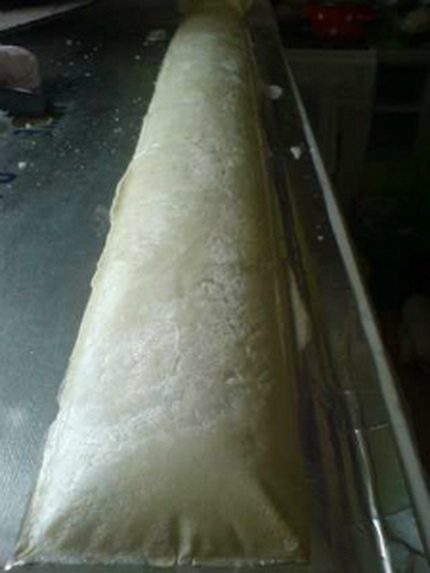
After all the damaged insulation is removed, proceed to cleaning the distance rings. They are located on the evaporator tube. Carefully remove and clean them.
Wizards warn that the area where the tube enters the compartment is insulated with a sleeve. In addition, just below there is another stub. They must be handled with extreme care, otherwise it is easy to break the tightness.
After cleaning, the rings are put in place. We take a sealant and carefully isolate the tube inlet section and the plug.
The next step is the restoration of isolation. If the model is with “felt boots”, you will have to prepare a form for filling. It is made of smooth tin and completely repeats the configuration of the cut part.
For other devices, it is enough to take a piece of cardboard, the size of which corresponds to the deleted fragment.
Next, prepare the mixture. Usually a two-component composition for thermal insulation is taken. The components merge into a common container and mix thoroughly for half a minute.
You can take an electric drill for this purpose. The prepared composition is poured into the recess in isolation, covered first with a film, and then, depending on the model of the device, with a prepared form or cardboard.
A load is set on top. It remains to wait for the solidification of the composition, which takes about half an hour. After that, we remove the load, remove the film and very carefully examine the resulting insulation for possible defects.
It may be too large pores or empty areas. If it is, we are preparing a new portion of the composition and remove the shortcomings. Having received high-quality insulation, we proceed to the final stage.
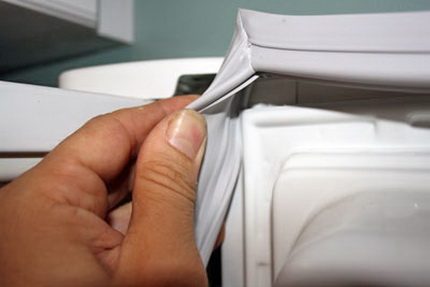
We remove excess foam with a knife, carefully clean all irregularities and ledges with an emery cloth. We take the tape and gently glue the entire repaired area. After that, you can put the capacitor in place.
Then we put the unit in an upright position, remove the tape and turn on the device in the network. It is important to understand that restoring isolation is a laborious process. If there is no self-confidence, it is better to invite a specialist.
Problem # 3 - seal failure
Replacing or repairing the sealing gum on the door is one of the simplest, but such work is very much in demand. Over time, the rubber seal will crack, crack, and cope much worse with its duties.
As a result, the snow coat quickly begins to freeze inside the freezer, which is why it is necessary to defrost more and more often. For starters, you can try to return the sealant to life.
Read more about how to defrost a refrigerator. Further.
Perhaps he did not lose his elasticity, but only deformed. We take a hair dryer and carefully warm up the rubber. The heated fragment is carefully expanded, returning to its original shape.
We do everything very carefully, because from accidental overheating, the rubber can melt or completely lose its elasticity and shape. And then the sealant will only have to be replaced. If all else fails, proceed to replacing the part.
It is best to purchase an original seal designed specifically for your model. Unfortunately, for Minsk units this is almost impossible. Therefore, you should find a seal in stores with similar characteristics.
Perhaps the best option is an element from any Atlanta model. Having prepared a new seal, you can begin to dismantle the old one.
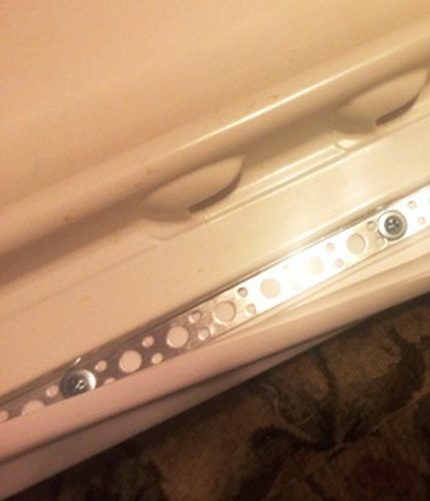
First you need to carefully remove it from the door. Here are the options. This can be done in different ways depending on the mount used. The gasket secured in the special grooves of the door is pry off with a screwdriver and removed.
The glued seal is carefully torn off. If the part is screwed with self-tapping screws, they are unscrewed and the rubber removed. The door after dismantling is cleaned, washed and dried well.
After that proceed with the installation of a new gasket. It is fixed in the same way as the old one was fixed. Although some masters are sure that the best option in this case is installation on self-tapping screws. They are attached under an elastic band.
If the previous gasket was already fixed in this way, then the fasteners will have to take a slightly larger diameter, since the holes for them are most likely broken.
Conclusions and useful video on the topic
How to correctly adjust the thermostat:
Subtleties of repairing the start-up relay:
Video lesson on restoring a refrigerator seal:
Minsk refrigeration units are reliable, generate good cold and work for a very long time. Despite the fact that their release has long been discontinued, they continue to work in many homes. Over time, problems may appear, which can be easily corrected by an experienced master.
If you want to try to repair the equipment yourself, you need to calculate your strength very well. Most often, in case of failure, the refrigerator has to be replaced with a new one.
Have experience using Minsk refrigerators? Please leave your comments, share your experience in the block below.

 Gorenje refrigerators: review of the range + what to look for before buying
Gorenje refrigerators: review of the range + what to look for before buying  Dexp refrigerators: product line overview + comparison with other brands on the market
Dexp refrigerators: product line overview + comparison with other brands on the market  SMEG refrigerator review: lineup analysis, reviews + TOP-5 of the best models on the market
SMEG refrigerator review: lineup analysis, reviews + TOP-5 of the best models on the market 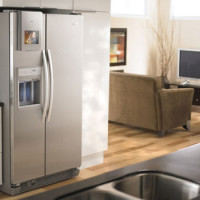 Whirlpool refrigerators: reviews, product line overview + what to look for before buying
Whirlpool refrigerators: reviews, product line overview + what to look for before buying  LG Refrigerators: performance overview, product line description + ranking of the best models
LG Refrigerators: performance overview, product line description + ranking of the best models 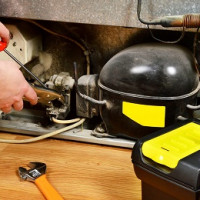 Why the refrigerator does not turn off: an overview of frequent breakdowns and how to fix them
Why the refrigerator does not turn off: an overview of frequent breakdowns and how to fix them  How much does it cost to connect gas to a private house: the price of organizing gas supply
How much does it cost to connect gas to a private house: the price of organizing gas supply  The best washing machines with dryer: model rating and customer tips
The best washing machines with dryer: model rating and customer tips  What is the color temperature of light and the nuances of choosing the temperature of the lamps to suit your needs
What is the color temperature of light and the nuances of choosing the temperature of the lamps to suit your needs  Replacement of a geyser in an apartment: replacement paperwork + basic norms and requirements
Replacement of a geyser in an apartment: replacement paperwork + basic norms and requirements
For quite some time we had an Atlant MXM-162 refrigerator. I don’t know exactly from what year, but for nearly twenty years he served faithfully.Reliable refrigerator with a large freezer, which is separated from the refrigerator. Periodically, ice forms on the walls, it is necessary to defrost it from time to time. But even so, the refrigerator deserved good marks. Worked not very noisy, it froze even in the hottest weather. It’s just that his time is gone, more functional models have appeared. Although I would now boldly put Minsk / Atlant somewhere in the country.
At me in Minsk, a fur coat on the back wall froze because I stopped closing the door tightly. It turned out that the door sagged and clung to the plastic bar below. I tried to adjust the inclination of the door, and it was already adjusted to the maximum, I had to remove this bar, apparently the refrigerator without this bar was lost, but the door now closes tightly. If it sags again, I'll try to outweigh the doors to the other side.
Hello. We need to look for the cause of the drawdown. It is not a matter of where the door is.
First of all, check whether your refrigerator is standing exactly, why there are such distortions that the door has already started to cling to the lower strut.
Secondly, try to unload the door, you can not put a lot of products there. And if it doesn’t work out, take some photos of your door and the location of the refrigerator in different angles in detail. We will definitely try to help you.